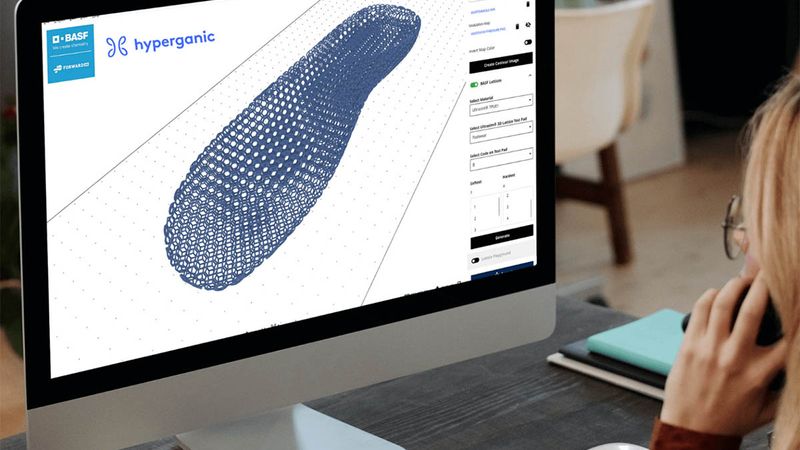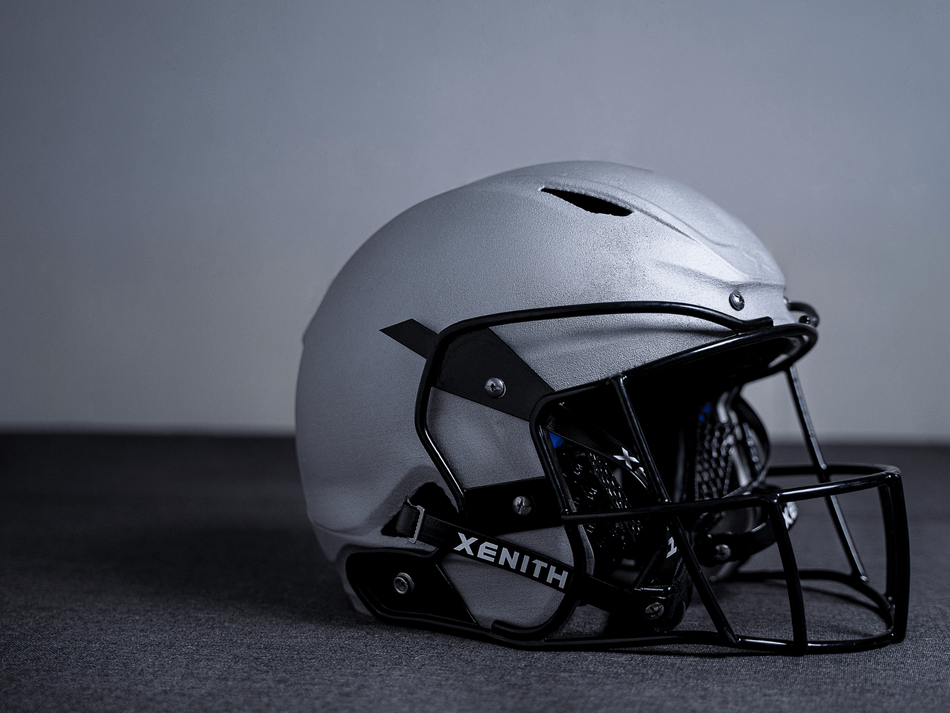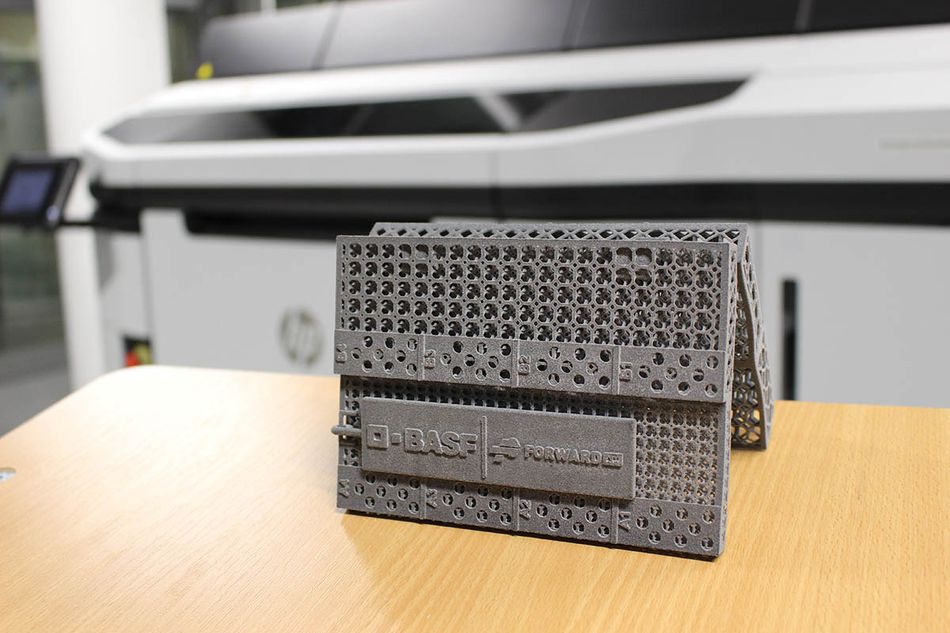Ultrasim® 3D Lattice Engine: Lowering the entry barrier to 3D printed lattices
3D printing, or additive manufacturing, has opened up a world of opportunity when it comes to design. Unconstrained by the limitations of traditional manufacturing processes, the technology has enabled breakthroughs in organic geometries, generative design, and lattice structures.
3D lattices in particular are transforming product development in several fields—from automotive, to sports equipment, to footwear, and beyond—by enabling the design and production of higher performance products. Up until recently, however, working with lattices has required a degree of expertise, somewhat limiting their adoption potential.
In this article we look at the Ultrasim® 3D Lattice Engine software from BASF Forward AM powered by Hyperganic, that is opening up lattice generation to a broader audience, allowing more product developers to expand their designs.
What are 3D Lattices?
Before diving into the capabilities of the Ultrasim® 3D Lattice Engine, let’s first look at what a three-dimensional lattice is. In the simplest terms, a lattice consists of a 3D pattern that is repeated to form a partially hollow structure. If you dissect a lattice structure, it is made up of cells, beams, and nodes, each of which can be tuned to change the pattern, size, and density of the 3D architecture. This in turn influences the material’s stiffness, impact absorption, and strength.
This tunability makes lattices incredibly versatile and gives manufacturers and product designers the ability to achieve a wide range of different mechanical properties all while using a single material. Today, the most common type of material for 3D printing lattices are elastomers, such as Ultrasint® TPU01 powder. The combination of the flexible material and lattice geometries has created exciting new opportunities for applications that would normally use foam for cushioning or impact protection.
Products like bike seats and helmets, which have traditionally integrated foam materials for cushioning, can benefit from the comfort, and breathability that 3D printed lattices offer. The main challenge to date with 3D lattices has been finding the right patterns and lattice properties for a particular application. With so much customization potential and millions of possible variations, it required a thorough knowledge of material properties and lattice geometries. However, cutting edge software suites are changing this.
Introducing Ultrasim® 3D Lattice Engine
BASF Forward AM’s latest software solution, Ultrasim® 3D Lattice Engine, makes it easier to explore different lattice geometries and implement them into product design cycles. Powered by Hyperganic, the solution offers users a wide array of lattice patterns, each of which has been tested and validated for different application groups.
Whether you are designing a new footwear product, aseat, or protective sporting equipment, there is a lattice geometry that meets the unique requirements of each application. Users can access an extensive lattice library in form of physical test pads and a digital overview of mechanical properties. By simply inputting their desired application area, find lattice designs validated for similar use cases. From there, the software uses implicit modeling to automatically generate lattice parts that fit the user’s design parameters. Powered by Hyperganic’s assembly-level voxel engine, the lattice parts are generated and modulated within seconds. Users receive an .stl or 3mf file for the lattice, which they can print and further validate.
The Ultrasim® 3D Lattice Engine essentially puts the company’s years of 3D lattice research and validation at your fingertips to facilitate the creation of cutting-edge products that require high-performance lattices. The intuitive solution has also been designed with all users in mind, not requiring any engineering know-how or expertise to generate lattices. Moreover, each lattice has been optimized for the 3D printing process as well as de-powdering.
Foam-to-Lattice Applications
The Ultrasim® 3D Lattice Engine has lattices for three key application fields: seating, protection, and footwear. Each of these areas already has several successful case studies that can provide inspiration for product designers new to lattice design and generation. In each of these use cases, which we’ll dive into below, 3D printed lattices improved upon traditional foam in terms of comfort, performance, and breathability.
Seating
German polymer additive manufacturing specialist OECHSLER and BASF Forward AM collaborated to design a next-gen saddle for a motorbike. Central to the project was the utilization of 3D lattices, which would replace the more traditional foam seating cushion and offer certain key advantages, including better ventilation and comfort.
In preparation for the lattice design, the partners collected and analyzed biomechanical specifications from various customer groups. This data, combined with digital simulation and physical testing, led OECHSLER and Forward AM to produce a saddle comprising different cushioning lattice structures all integrated into a single seating pad.
In the end, the 3D printed motorbike saddle was not only more comfortable for the rider, it was also 25% lighter than a foam counterpart. The manufacturing process itself also proved to be more streamlined: because the lattice was printed in a single piece, no assembly or gluing was required.
Protection
During the NFL Helmet Challenge working in partnership with BASF Forward AM, football helmet company Xenith developed helmet lattice structures optimized for protecting football athletes from the intense impacts of the game. The customizable lattice structure has been integrated into helmets to provide the best fit possible as well as head protection from collisions and in-game impacts.
Created using Forward AM’s Ultrasim® virtual engineering design service, the lattice designs for helmets have undergone extensive simulation, including shock absorption modeling. The resulting design has been tuned to integrate custom energy control cells engineered to protect wearers from high-speed impacts. The helmet liner are 3D printed using Ultrasint® TPU01 high performance powder and HP’s MJF 3D printing technology.
Based on this experience a protective lattice was developed which can also be tuned for other protection applications, such as various protective body pads, ergonomic cushioning for backpacks, and more. In addition to the impact resistance, the lattices also offer superior comfort, breathability, and heat dissipation for the wearer.
Footwear
3D printed lattices are also gaining popularity in the footwear segment, where brands are using the technology to produce high-performance insoles and midsoles for athletic and , high-fashion shoes. Compared to foam or rubber, the flexible plastic lattices offer many benefits, including greater comfort and customization potential. Perhaps the most innovative advantage of lattices in this field, however, is the ability to design lattices optimized for stability and support.
Tunable densities can be applied to create midsoles or insoles that provide greater support and stiffness in some areas of the foot and more flexibility and cushioning for others. The shoes are also more lightweight, which improves comfort and can enhance performance for the wearer. Another benefit of using 3D printed lattices for footwear is customization: brands can offer their customers a more personalized experience at scale thanks to 3D printing.
It’s worth emphasizing that BASF Forward AM drew from its experiences working with product developers in each of these areas to bring lattices to a broader user base. The foundational software product is therefore the perfect tool for getting started with integrating lattices into new designs, whether it’s seating, protective equipment, or footwear.
Try 3D Lattice Generation Today
Product designers and development teams can take advantage of the Ultrasim® 3D Lattice Engine by contacting BASF Forward AM. Users can install the tool for a free trial and start automatically generate lattice parts. The lattice designs can then be 3D printed using Ultrasint® TPU01 either in-house or using a service bureau to accelerate the product development timeline and bring innovative new products to market.
About the sponsor: BASF Forward
At BASF 3D Printing Solutions GmbH, we provide 3D printing solutions along the entire Additive Manufacturing value chain, under the brand Forward AM. From consultancy and development, through bespoke design, digital simulation and prototype printing, to finishing and exhaustive component testing – we provide you with exactly what your business needs. Whichever material you require for your specific project, Forward AM offers you the world’s largest selection of 3D printing materials and service solutions.



